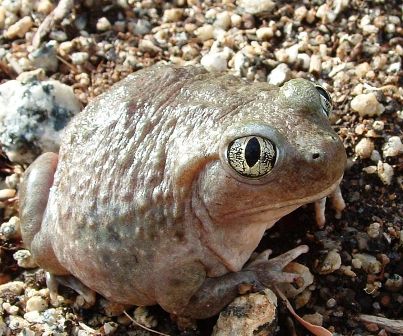- Series:Animals, God’s Design, Transcript English
Psalm 104:27
“These wait all upon thee; that thou mayest give [them] their meat in due season.”
It’s not news when a dog bites a man. However, it is news when a man bites a dog. Likewise, it’s not news when a toad eats a fly. But news about a fly that eats toads should get our attention.
The unusual drama of a toad-eating fly was first discovered in the Arizona desert by Thomas Eisner of Cornell  University. He noticed a muddy desert pond that had a large population of spadefoot toads. Looking closer, he noticed that many of the toads were in distress, and some were being pulled down into the mud at the bottom of the pond. A little digging revealed that the predator was the larvae of horseflies.
University. He noticed a muddy desert pond that had a large population of spadefoot toads. Looking closer, he noticed that many of the toads were in distress, and some were being pulled down into the mud at the bottom of the pond. A little digging revealed that the predator was the larvae of horseflies.
Further study showed that the larvae burrow into the soft mud until only their head is barely exposed. When an unsuspecting toad wanders by, that larva grabs the toad with its powerful mandibles and pulls it into the mud. The larvae inject their victims with venom and then consume the toad’s body fluids. Eisner says that this drama plays out wherever there are horsefly larvae.
While this is not the prettiest subject we’ve ever covered, it certainly is one of the strangest. However, consider the Creator’s design here. The horsefly larvae eat toads in order to grow into adults. The toads eat the adult horseflies to make more toads. It appears that God has designed a rather circular food chain that operates quite nicely in the desert where food is scarce.
Prayer:
Dear Lord, I thank You that You have so generously provided for all of the needs of all of Your creatures, no matter what the circumstances. Help me to remember the individual care You give to all of Your creatures next time I am tempted to worry about the future. Amen.
Notes:
J. Greenberg. 1983. “For Whom the Bell? Toads-Poetic Justice in the Arizona Desert.” Science News, Nov. 5, p. 293. Photo: American spadefoot toad. Courtesy of Takwish. Licensed under the Creative Commons Attribution-Share Alike 2.5 Generic license.
